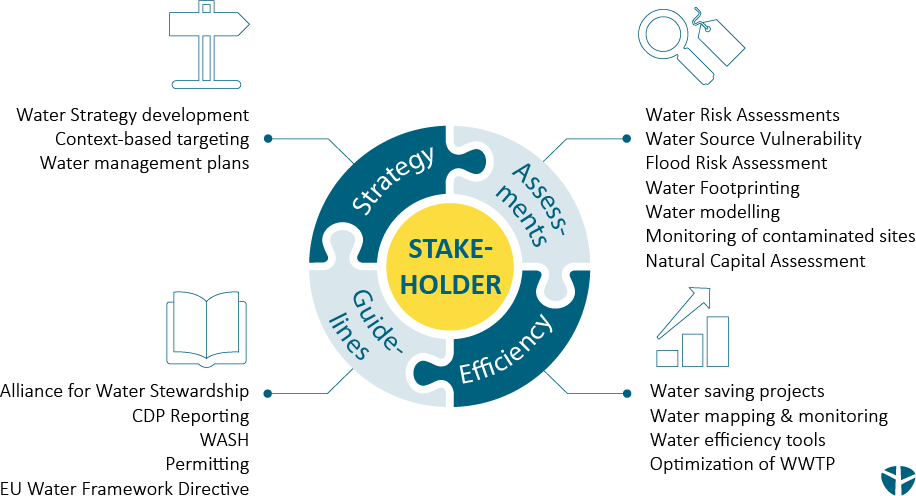FAQ
Frequently asked questions on water stewardship
What is AWS?
The Alliance for Water Stewardship (AWS) is a global membership collaboration comprising businesses, NGOs and the public sector. AWS members contribute to the sustainability of local water resources through the adoption and promotion of a universal framework for the sustainable use of water – the International Water Stewardship Standard, or AWS Standard – that drives, recognizes and rewards good water stewardship performance.
What are water-related risks?
Water-related risk is the possibility of an organization experiencing a water-related challenge, e.g., water scarcity, water stress, flooding, infrastructure decay or drought.
An organization will not have a comprehensive understanding of its risk exposure and the most appropriate response unless it is able to take account of the local basin context and conditions. River basin level risk assessment is particularly relevant to a water stewardship approach to securing water resources as collaboration with other basin users and external stakeholders is central to understanding and managing risk.
Three types of water-related risks are considered:
- Physical risk: risk driven by water stress or scarcity, flooding or pollution.
- Regulatory risk: risks driven by an expected or unexpected change or uncertainty in law or regulation that may have direct or indirect impacts on a company.
- Reputational risk: risk driven by litigation, product risks due to changes in consumer behavior, and risks that may impact decisions made by investors, consumers and current/potential employees concerning a company.
How can water efficiency be improved?
A clear water map, detailed and accurate water metering and consequent monitoring are key elements to start working on water efficiency performance at the site level. Then, main consumers are identified, optimal operation ranges are calculated and improvement opportunities can be revealed.
Why should we disclose through CDP water?
There are tangible benefits to disclosing:
- Protect and improve your company’s reputation – build trust through transparency and respond to rising environmental concerns among the public.
- Boost your competitive advantage – gain a competitive edge when it comes to performance on the stock market, access to capital and winning tenders.
- Track and benchmark progress – benchmark your environmental performance against your industry peers, with an internationally recognized sustainability score and feedback against your climate targets.
- Uncover risks and opportunities – identify emerging environmental risks and opportunities that would otherwise be overlooked, to inform data-driven strategy.
- Get ahead of regulation – in a world in which mandatory disclosure is gaining momentum, disclosing through CDP enables companies to meet reporting rules in multiple regions. With CDP, you’ll be fully aligned with the best-practice TCFD recommendations.
Disclosure is the essential first step to drive environmental action, and CDP is the gold standard for corporate environmental reporting.
What do we have to report on water under the Corporate Sustainability Reporting Directive (CSRD)?
Water is an essential natural resource that many businesses depend on, and most likely will become material to report for many companies. If water is defined as a material topic, companies need to report on several points (ESRS E3) related to:
- How material water and marine resources-related impacts, risks, and opportunities are identified.
- Policies and actions related to managing water and marine resources
- Metric and targets including withdrawal and discharges, broken down by geography and business segment
- Anticipated financial effects from water and marine resources-related impacts, risks, and opportunities.
Considering the financial effects linked to water consumption and the increasing threat of water scarcity, improving the monitoring and reporting of water resources will be of crucial importance for businesses.






